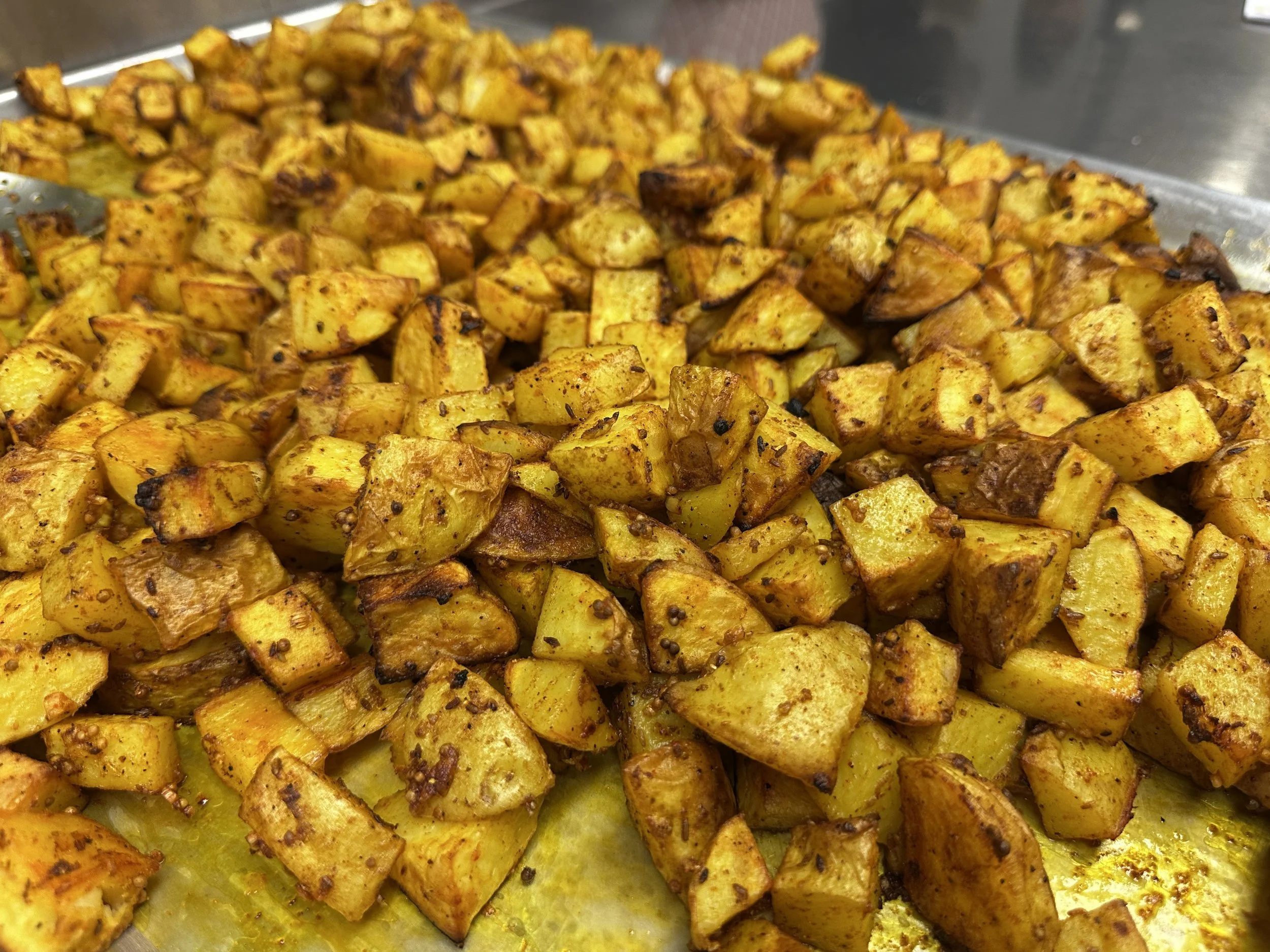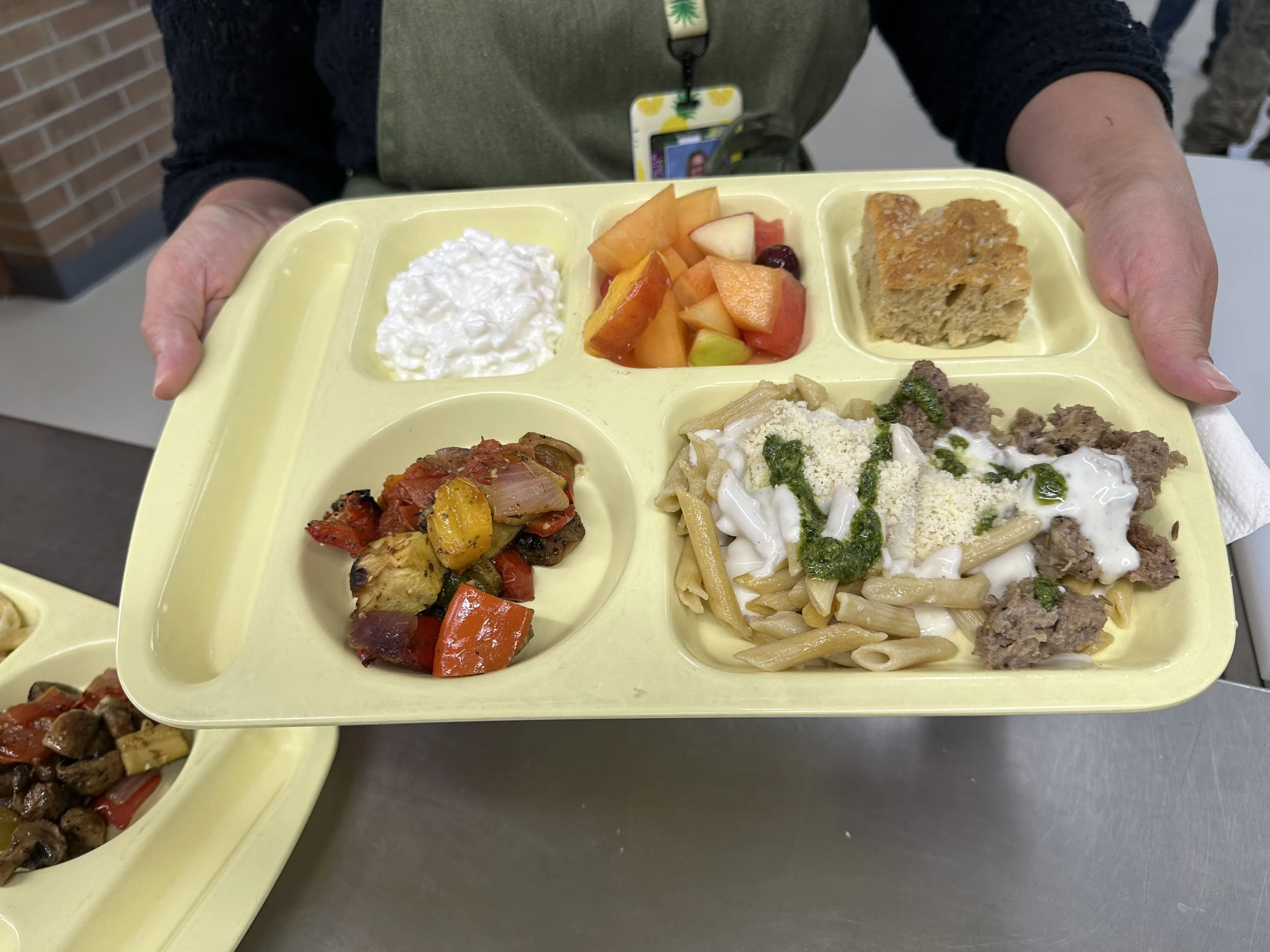
Scratch Cooking
Scratch cooking means making meals from fresh, raw ingredients. Think of it like cooking the way generations before us did: using whole vegetables, meats, grains, and spices to create meals packed with real flavor.
Do more Scratch Cooking if your goal is to:
✅ Serve fresh, tasty, healthier meals
✅ Increase participation
✅ Build staff confidence
✅ Build staff competence
For the sake of our children’s health, we must begin serving more SCRATCH COOKED foods and LESS frozen, manufactured food to our children in our nation’s schools. I recognize that this is a big task; bigger for some schools than for others. Many schools have moved so far away from the scratch cook model that they don’t have kitchens equipped to do any type of cooking.
If this is your situation, you certainly have more obstacles to overcome, but this work is important enough to begin the process. Here are some ways to get the ball rolling:
Advocate for updating your district’s facilities to accommodate the preparation of real food in the future. Don’t let another Bond project, remodel or new building project begin without adding or improving kitchen facilities.
If your schools already have the ability to do some SCRATCH COOKING, then it is so important to begin moving in that direction. Set a course and get started!
If you are already doing some SCRATCH COOKING, then plan to expand your scratch offerings. Plan it into your continuous improvement plans then write them into your cycle menus. Train your teams to prepare them. Leverage your commodity foods entitlement dollars! Seek assistance from someone who is “a little further down the road” than you.
Fresh fruit and veggie bars are a great way to get going on SCRATCH COOKING very quickly!
Why Scratch Cooking Wins
1. Healthier Choices
Processed foods are loaded with hidden sugars, salt, and preservatives. When you cook from scratch, you choose exactly what goes into your food. Fresh ingredients mean better meals for your body.
2. Bigger, Bolder Flavors
Pre-made meals can’t compete with the taste of food made from scratch. Fresh herbs, ripe vegetables, and properly cooked meats create layers of flavor you’ll never find in a box. Roast carrots to bring out their sweetness, or slow-cook meat until it’s fall-apart tender. That’s the power of scratch cooking.
3. Saves Money
Buying raw ingredients is often cheaper than packaged meals. Leftovers get a second life too—turn roasted veggies into soups or extra grains into stir-fries. Less waste, more savings.
4. Fun & Rewarding
There’s pride in serving a meal you made from the ground up. It’s a chance to learn, experiment, and even get the family involved. Plus, the smells and tastes along the way make cooking as enjoyable as eating.
Mastering basics like chopping, roasting, and sautéing lets you take charge of what’s on your plate, making every meal healthier and tastier.
Taste of Washington Day at Wenatchee School District
Most of us enjoy food that tastes amazing
While it’s easy to grab fast food, order takeout, or heat up something from the freezer, Making your own meals at home can boost nutrition and reduce the extra salt, sugar, and unhealthy fats often found in packaged or fast food.
Worried about cost? Cooking from scratch might seem pricey at first, but many ingredients stretch across multiple meals, making each serving more affordable in the long run. It’s a smart way to eat well and save money.
You don’t need to be a pro chef to get started. With a few simple ingredients and some basic tools, you can enjoy the benefits of home-cooked meals every day. So grab your apron, turn up the heat, and make cooking from scratch your new go-to!
The Four Pillars of Success in School Food Service
If you want to shake up school food service and serve meals that actually matter, you’ve got to build on these four solid pillars. Think of them as your secret sauce to success




